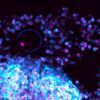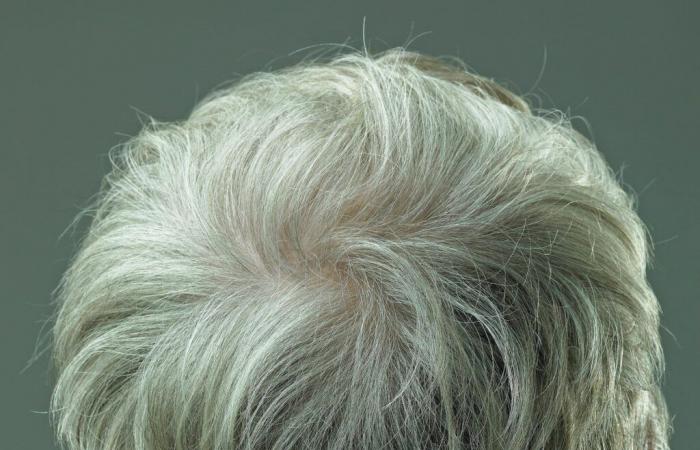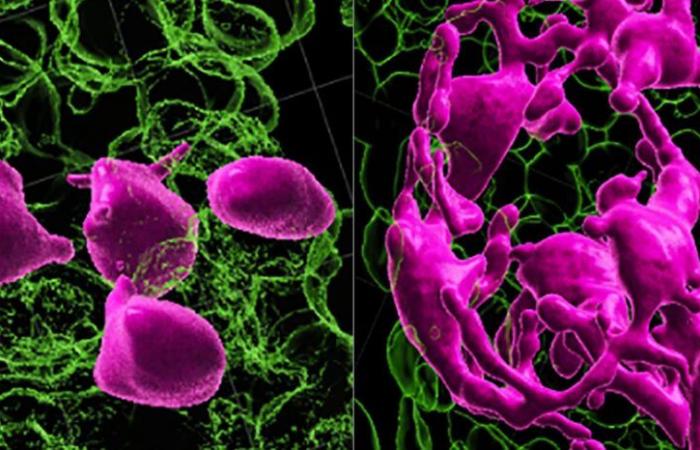⇧ [VIDÉO] You might also like this partner content
Aging, often seen as the inevitable enemy of our hair, is generally considered to be the main cause of gray hair. However, a recent study has shed light on an underlying cause, beyond the simple effect of the passage of time. In particular, it made it possible to understand that the movement of stem cells responsible for hair coloring (once transformed into pigments) is at the heart of the process. This discovery potentially opens the way to the development of treatments that could restore hair to its original color.
In our body, melanocytes are responsible for producing melanin, the pigment that gives color to our skin, body hair and hair. At the capillary level, melanin stem cells settle in hair follicles, thus receiving an essential protein signal. Researchers from the Grossman School of Medicine at New York University therefore focused their research on these stem cells, seeking to understand their role in the appearance of gray hair.
In his work published in the journal Naturethe team, led by Dr. Qi Sun, a postdoctoral researcher at NYU Langone Health, conducted experiments in mouse models. His efforts focused on mouse melanocyte stem cells, or McSCs. To track their transformations, researchers have set up marking systems at the root of each rodent’s hair.
Through their observations of the hair cycle in mice, they discovered that these stem cells moved between various microscopic compartments of hair follicles, each compartment transmitting a distinct protein signal to them. This unique behavior of McSCs, in constant migration, differs from that of other cells in the body, which generally evolve in a linear manner until their disappearance. “
Our study sheds light on the key role of melanocyte stem cells in hair coloring », Explains Dr Sun in a press release.
Hair-coloring stem cells (left) must be in the germinal compartment to be activated (right) and develop into pigment. © SPRINGER-NATURE
Towards a deeper understanding of melanocyte stem cell function
The researchers also identified an intriguing abnormality in some mice. By examining their hairs, the team found that some McSCs remained trapped in a compartment of the hair bulb called the follicle bulge, preventing them from returning to the germinal compartment, where they should return to their stem cell state. Thus, deprived of their maturation signal, these cells stop producing pigment, causing the hair to turn gray. This retention could be due to genetic mutations or external factors, although the study does not fully specify these causes.
« It is the loss of the chameleon capacity of melanocyte stem cells which could explain the graying and depigmentation of hair. “, explains Mayumi Ito, co-author of the study and professor in the department of cell biology at NYU Langone Health. “ These results suggest that the mobility and reversible differentiation of melanocyte stem cells are essential for preserving healthy, colored hair. », she adds.
See also


To explore their findings further, the team conducted a second experiment on mice with salt-and-pepper coats. Over two years, the researchers regularly plucked strands of hair to observe the effects of forced regrowth. They observed that the rate of McSCs blocked in the follicle bulge increased by 15 to 50%. On the other hand, the stem cells of the non-plucked hairs continued to move back and forth between the compartments and produced brown pigments.
« Newly identified mechanisms suggest that a similar positioning of melanocyte stem cells could exist in humans “, says Dr Sun. “ If so, this could offer ways to reverse or prevent graying of human hair by helping these blocked cells regain mobility within hair follicles », he concludes.








